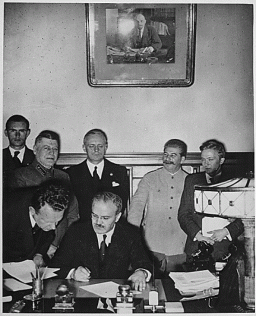<< Previous | Displaying results 6251-6300 of 6720 for "" | Next >>
-
Identification picture of a prisoner accused of homosexuality
PhotoIdentification picture of a prisoner, accused of homosexuality, who arrived at the Auschwitz camp on May 28, 1941. Auschwitz, Poland.
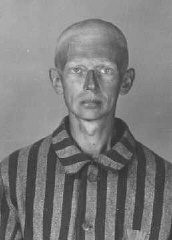
-
Reich President Paul von Hindenburg meets with Chancellor Adolf Hitler.
PhotoReich President Paul von Hindenburg poses with Chancellor Adolf Hitler. Hindenburg appointed Hitler chancellor on January 30, 1933. Germany, 1933-1934.

-
Baldur von Schirach at the Reich Academy for Youth Leadership
PhotoHitler Youth leader Baldur von Schirach speaking at the opening of the Reich Academy for Youth Leadership. Braunschweig, Germany, June 4, 1938.
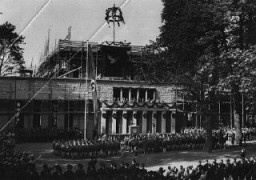
-
Adolf Hitler arriving at a Nazi Party Congress
PhotoFollowed closely by an SS bodyguard, Adolf Hitler greets supporters at the fourth Nazi Party Congress in Nuremberg. Germany, August 1929. US Holocaust Memorial Museum, courtesy of William O. McWorkman
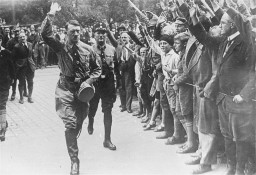
-
An aerial view of Amsterdam
PhotoAn aerial view of Amsterdam. The photograph was taken for German military use. Amsterdam, the Netherlands, 1939-1940.
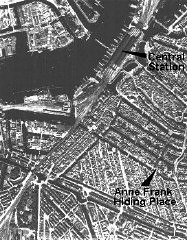
-
Arrival of Polish Jewish displaced persons in Vienna
PhotoArrival of Polish Jewish displaced persons in Vienna. They were sheltered at the Rothschild Hospital displaced persons camp. Vienna, Austria, 1946.
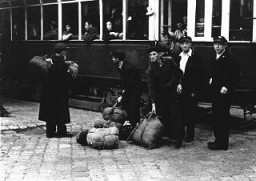
-
Chart used in the Doctors' Trial
PhotoChart used by the prosecution in the Doctors' Trial illustrates the organization of the Medical Services of the Wehrmacht (German armed forces). Nuremberg, Germany, December 9, 1946-August 20, 1947.
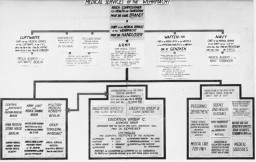
-
Nazi officials and Catholic bishops listen to a speech by Wilhelm Frick
PhotoNazi officials and Catholic bishops listen to a speech by Wilhelm Frick, Reich Minister of the Interior, at an official ceremony in the Saarbrucken city hall marking the reincorporation of the Saarland into the German Reich. March 1, 1935. Among those pictured is Joseph Goebbels (seated at the far right), Franz Rudolf Bornewasser (Bishop of Trier) and Ludwig Sebastian (Bishop of Speyer).
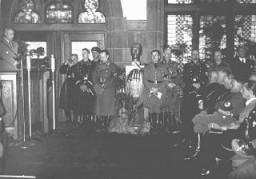
-
Esther Lurie in Brussels
PhotoPhotograph of Esther Lurie and a friend, Jose, who were both students at the Institute of Art in Brussels. Here they are enjoying refreshments on an outdoor terrace in the early 1930s. Lurie would later flee Europe as war became imminent. Brussels, Belgium, 1931–1933.
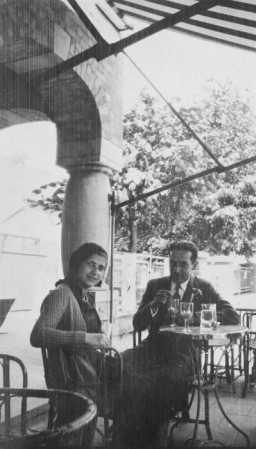
-
View of the Sobibor camp gate
PhotoView of the Sobibor camp gate in the spring of 1943. Jews deported to the Sobibor killing center were driven through the gate into the camp on foot, by truck or horse-drawn cart. The train track led through a separate entrance to the right onto the site. Pine branches were braided into the fence to make it difficult to see in from the outside. This image comes from an album and collection kept by Johann Niemann, who became deputy commandant of the Sobibor killing center after holding positions in the…
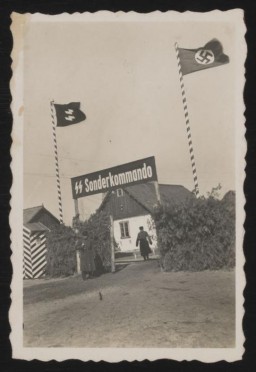
-
SS personnel at the Sobibor killing center relax on a terrace
PhotoRare photograph showing Sobibor killing center personnel relaxing and posing, all while implementing the mass murder of at least 167,000 innocent Jews.
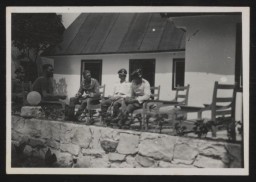
-
View of the German living quarters at the Sobibor killing center
PhotoRare photograph showing a view of the German personnel living quarters at the entrance to the Sobibor killing center in German-occupied Poland.
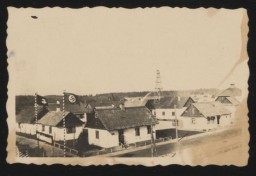
-
View of the Sobibor killing center
PhotoRare image of the Sobibor killing center, taken from an album of photos belonging to Sobibor deputy camp commandant Johann Niemann.
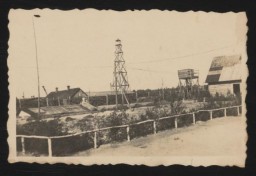
-
View of the Sobibor killing center
PhotoRare image of the site of the Sobibor killing center, taken from an album of photos belonging to Sobibor deputy camp commandant Johann Niemann.
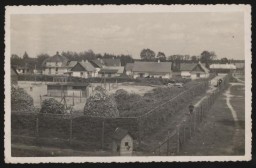
-
Johann Niemann at the Sobibor killing center
PhotoA group photograph including Johann Niemann in front of the old officers' dining room in the Sobibor killing center in German-occupied Poland, spring 1943.
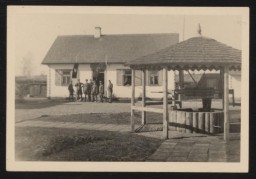
-
Building that housed the officers' dining room at the Sobibor killing center
PhotoView of a building that served as a dining room for the Germans and as lodgings for the camp commanders at the Sobibor killing center in German-occupied Poland.
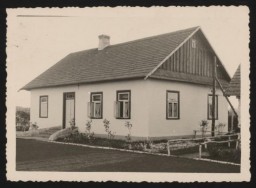
-
Art handlers hold a confiscated artwork by Emil Nolde
PhotoArt handlers at the Schloss Niederschoenhausen storage depot hold a section of Emil Nolde’s confiscated “Das Leben Christi,” 1937. The Nazi regime confiscated the work as "degenerate" art.
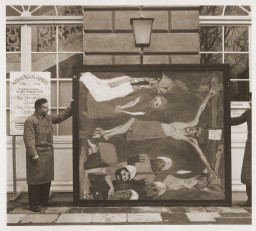
-
Artworks confiscated by Nazi Germany
PhotoWorks of confiscated art—including those by Pablo Picasso, Henri Matisse, and Vincent van Gogh—line the walls of the Schloss Niederschoenhausen storage depot. The Nazi regime confiscated the works as "degenerate" art.
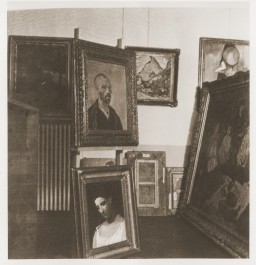
-
Beer Hall Putsch
PhotoTroops supporting Hitler arrive in Munich during the Beer Hall Putsch on November 9, 1923.
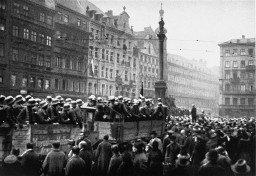
-
SA men parade down a city street during a Nazi rally
PhotoUniformed members of the SA parade down a city street in Duisburg during a Nazi rally, circa 1928.
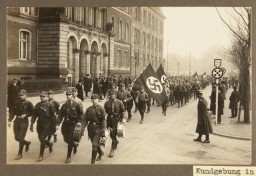
-
Hitler reviews passing Nazi Party members, 1923
PhotoAdolf Hitler, Julius Streicher, and other dignitaries review passing Nazi Party members at the Deutscher Tag (German Day) celebration in Nuremberg, September 02, 1923.

-
SS officers and German nurses
PhotoSS officers and German nurses gather during the dedication ceremony of the new SS hospital in Auschwitz, September 1, 1944. Among those pictured are Karl Höcker, Josef Kramer, and SS-Hauptsturmführer Heinrich Schwarz.
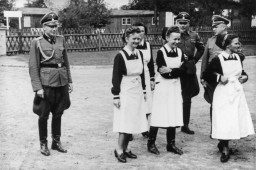
-
Nursing staff at the Hadamar "euthanasia" facility
PhotoSome of the nursing staff of the "euthanasia" clinic at Hadamar stand outside of the institution after the arrival of US forces, April 5, 1945. Irmgard Huber, the head nurse of the clinic, is probably the person standing fifth from the right. © IWM EA 62183
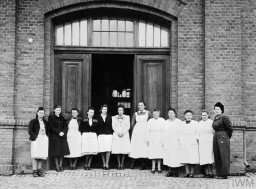
-
The 800-meter race at the 1936 Olympic Games
PhotoRunners competing in the 800-meter race at the Olympic games in Berlin. In this photograph, American John Woodruff is just visible in the outside lane. He came from behind to win the race in 1:52.9 minutes. Source record ID: 95/73/12A.
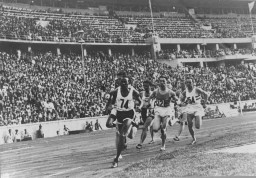
-
Cigarette card showing track and field athletes
PhotoCigarette card portraying some of the American track and field athletes who competed in the 1936 Olympics in Berlin, Germany. The US team was the second largest to compete in the 1936 Summer Olympic Games with 312 members, including 18 African Americans. Cigarette cards were collectible cards often included in packages of cigarettes into the 1940s.
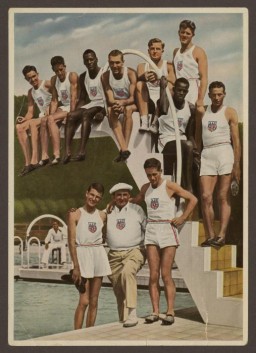
-
American athletes Jesse Owens and Dave Albritton
PhotoAfrican American athletes Jesse Owens and Dave Albritton pose with a German citizen. They both competed in the 1936 Olympic Games. Albritton won the silver medal in high jump. Owens won gold medals in the 100-meter dash, 200-meter dash, broad (long) jump, and the 4x100-meter relay.
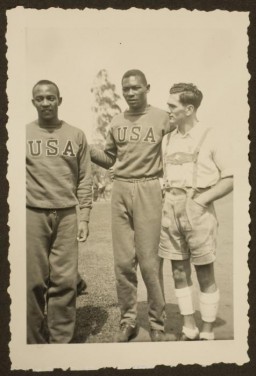
-
Archie Williams at the 1936 Olympic Games in Berlin
PhotoAfrican American athlete Archie Williams competed in the 1936 Berlin Olympic Games. He won the gold medal in the 400-meter race. The US team was the second largest to compete in the 1936 Summer Olympic Games with 312 members, including 18 African Americans.
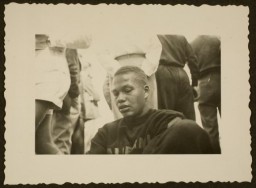
-
Portrait of Janusz Korczak
PhotoPortrait of Janusz Korczak, a Polish Jewish doctor and author who ran a Jewish orphanage in Warsaw, circa 1930.
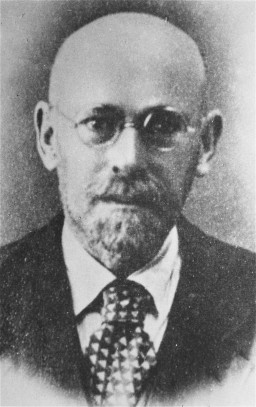
-
Sculpture memorializing Janusz Korczak
PhotoA wall sculpture memorializing Polish Jewish doctor Janusz Korczak resides on the exterior of a teaching hospital that bears his name, Olsztyn, Poland.
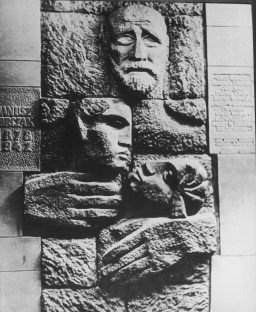
-
The Krochmalna Street Orphanage
PhotoExterior view of the Jewish orphanage run by Janusz Korczak. Established in 1912, the orphanage was located at 92 Krochmalna Street in Warsaw, Poland. Photo taken circa 1935.
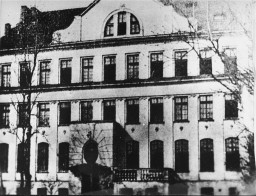
-
Nazi propaganda depicting German children
PhotoIn this Nazi propaganda picture, young German children are shown eating a meal. The original caption reads: "Everything for the healthy child." Photo dated 1933–1943.
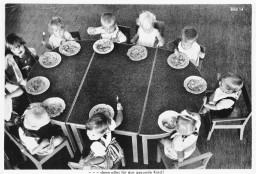
-
Lebensborn program home
PhotoTwo photos showing the exterior and interior views of a Lebensborn home, circa 1933–1943.
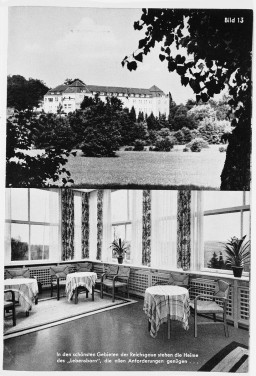
-
Two of the "Tehran Children"
PhotoPhotograph of two of the Tehran Children, who reached Palestine in 1943 via Iran.
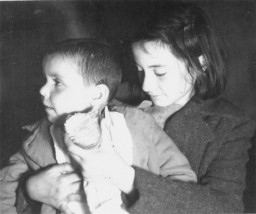
-
SS troops stand at attention
PhotoSS troops stand at attention for inspection, Germany, 1936-1939. This photo is from an album of SS photographs.
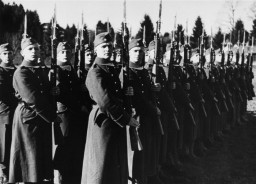
-
German police deployment during World War II
PhotoPropaganda poster depicting two Germans in the field during World War II. After the war began in 1939, Police Battalions were deployed alongside the German military. This poster was designed by SS-Hauptsturmführer Felix Albrecht in 1941.
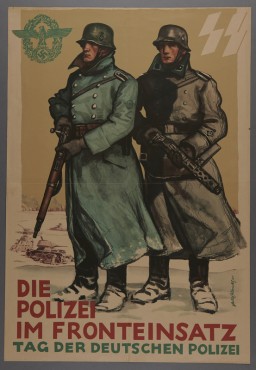
-
German Order Policeman in occupied Lodz
PhotoBernhardt Colberg, a member of Reserve Police Battalion 101, poses in front of its headquarters in the vicinity of Lodz in German-occupied Poland. The police battalions were units of the German Order Police who were deployed to German-occupied areas of Europe during World War II. Photo dated 1940–1941.
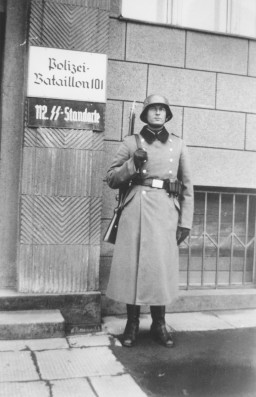
-
German Order Policemen publicly humiliate Jews
PhotoMembers of the German Order Police publicly humiliate a group of Jews by forcing them to perform exercises, 1939–1940. Sosnowiec, in German-occupied Poland.
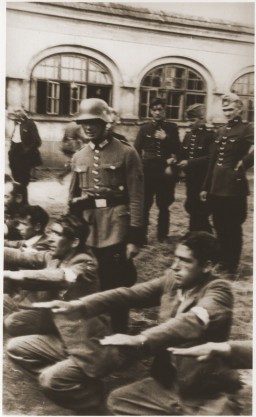
-
German Order Policemen stand guard over a group of Jewish men
PhotoMembers of the German Order Police stand guard over a group of Orthodox Jewish men, 1942. The men have been rounded-up either for forced labor or public humiliation. Krakow, in German-occupied Poland.
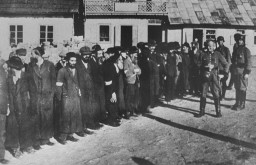
-
German Order Police during the expulsion of Jews from Sieradz
PhotoA member of the German Order Police raises a stick to beat a Jew who is loading his bundles onto a wagon during expulsion from the community of Sieradz in German-occupied Poland. Photo dated 1940–1942.
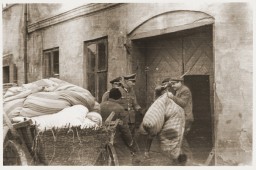
-
German police search a Jewish man at gunpoint
PhotoGerman policemen search an elderly, religious Jew at gunpoint in German-occupied Poland, circa 1941.
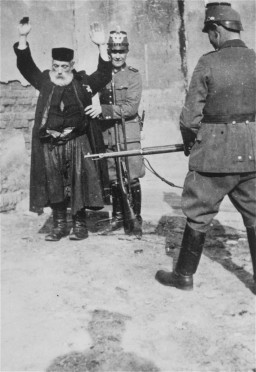
-
Order Police Battalion 101
PhotoGerman Order Police officers inspect members of Police Battalion 101 in Lodz after the German occupation of Poland, 1939–1943.
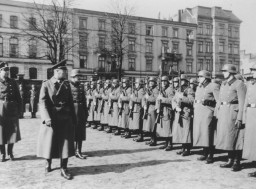
-
Prewar photo of the extended Kracowski family
PhotoThe Kracowski family was living in Bialystok when German Order Police Battalion 309 killed 2,000-3,000 Jews on June 27, 1941. Dr. Samuel Kracowski was among the hundreds of Jews locked in the Great Synagogue and burned alive. After the Germans ordered the establishment of a ghetto in Bialystok, Samuel's wife, Esther, and children, Ewa and Julek, were given a room in the ghetto clinic. Photo dated September 1, 1935. Samuel and Esther are seated in the center, with Julek seated in the front row on the…

-
German Order Police Battalion 101
PhotoA member of the German Order Police Battalion 101 stands next to a sign marking the entrance to the Lodz ghetto in German-occupied Poland, 1940–1941. The German text of the sign reads: "Announcement: In accordance with a police order of February 8, 1940, all Germans and Poles are forbidden entry into the ghetto area."
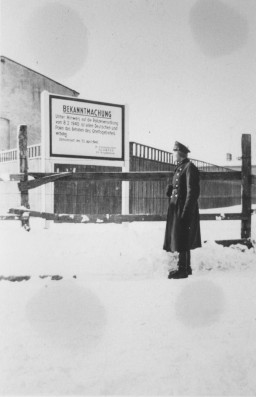
-
Manzanar
PhotoManzanar relocation center for Japanese Americans, photographed by Ansel Adams. Bird's-eye view of the grounds from the guard tower.
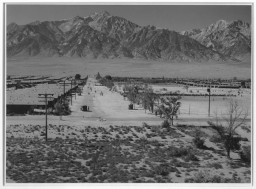
-
Refugee camp in Zbaszyn
PhotoView of Zbaszyn, the site of a refugee camp for Jews of Polish nationality who were expelled from Germany. The Jewish refugees, hungry and cold, were stranded on the border, denied admission into Poland after their expulsion from Germany. Photograph taken between October 28, 1938, and August 1939. Warsaw-based historian, political activist, and social welfare worker Emanuel Ringelblum spent five weeks in Zbaszyn, organizing assistance for the refugees trapped on the border.
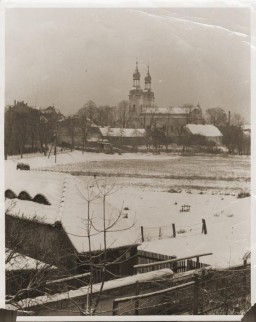
-
View of the refugee camp in Zbaszyn
PhotoView of the flour mill in Zbaszyn, which served as a refugee camp for Jews expelled from Germany. The Jewish refugees, hungry and cold, were stranded on the border, denied admission into Poland after their explusion from Germany. Photograph taken between October 28, 1938, and August 1939. Warsaw-based historian, political activist, and social welfare worker Emanuel Ringelblum spent five weeks in Zbaszyn, organizing assistance for the refugees trapped on the border.
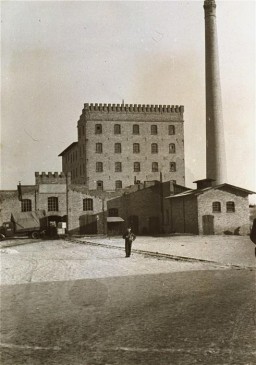
-
Group portrait of Jews expelled to Zbaszyn
PhotoNovember 1938 group portrait of Jews of Polish nationality who were expelled from Nuremberg, Germany, to the Polish border town of Zbaszyn. The Jewish refugees were stranded on the border and were denied admission into Poland after their explusion from Germany.Pictured from left to right are: Leo Fallmann; Rosa Fallmann; Mr. Auerbach; Mr. Zahn; unknown; unknown; Chaim Kupfermann; Anni Kupfermann; Simon Wassermann; unknown; Regina Holzer; and Bertha Holzer.
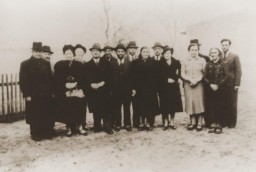
-
Theo Markus Verderber
PhotoTheo Markus Verderber's mother, Gelle, was among the Jews of Polish nationality expelled from Germany in October 1938. Theo and his younger brother were born in Germany, but went with their mother to a refugee camp in the border town of Zbaszyn. Hungry and cold, the refugees were stranded on the border, unwelcome in either Germany or Poland. Theo was ultimately chosen to join a Kindertransport to England, arriving there in February 1939. His mother, sister and youngest brother remained in…
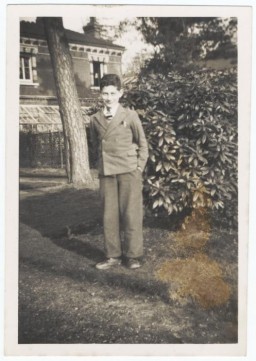
-
Arrival at Auschwitz
PhotoJews from Subcarpathian Rus get off the deportation train and assemble on the ramp at the Auschwitz-Birkenau killing center in occupied Poland. May 1944.
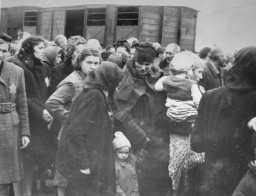
-
Signing of the German-Soviet Pact
PhotoSoviet Foreign Minister Molotov signs the German-Soviet Pact. Joachim von Ribbentrop and Josef Stalin stand behind him, Moscow, Soviet Union, August 23. 1939.
